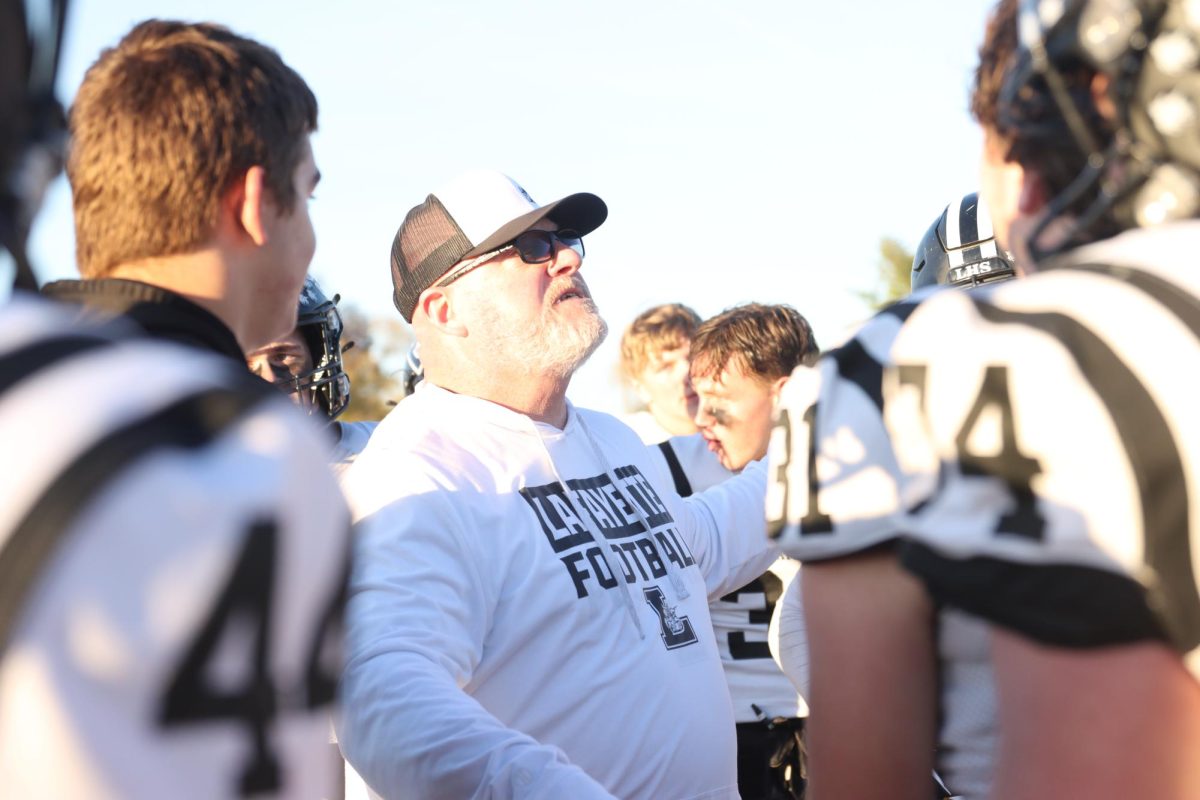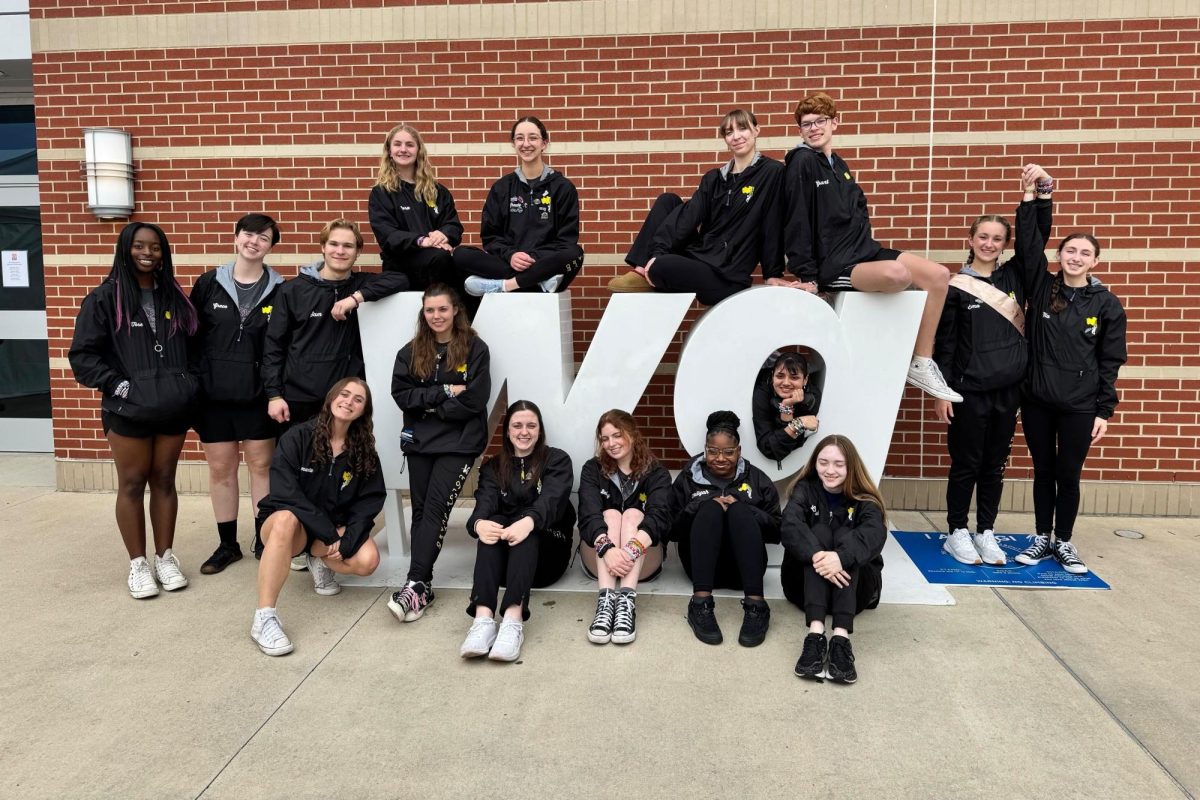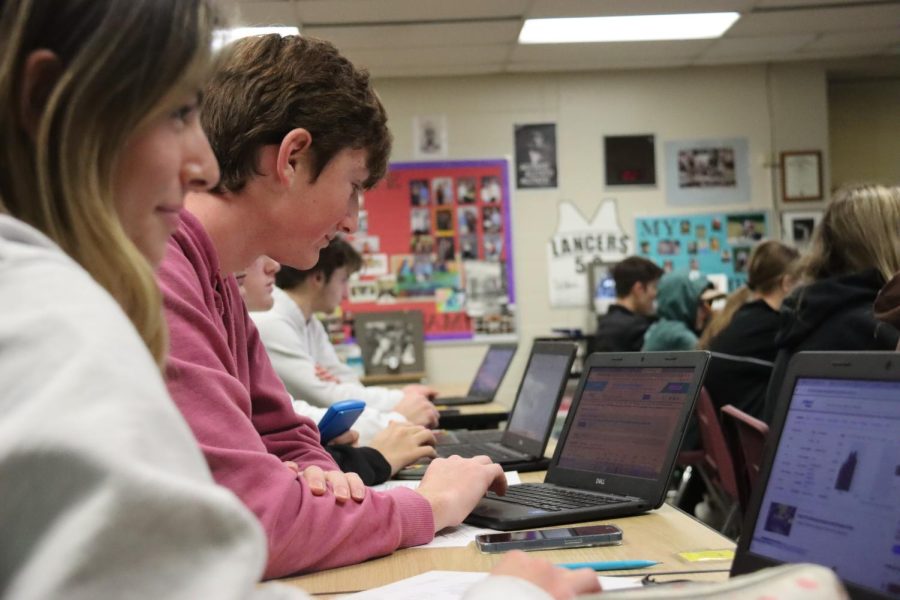More bang for the buck
Making money grow takes patience, education
During Economics and Personal Finance, juniors Hudson Kohler and Ella Manning research stocks as part of a stock market simulation project. For the project, they had to follow a $10,000 budget while teacher Vince DeBlasi gave them advice on what types of stocks to invest in to achieve the highest possible capital gains. The class is designed to help students learn saving and investing strategies and meets the .5 personal finance credit necessary to graduate through the required Missouri Personal Finance Assessment taken during the course.
December 14, 2022
Learning to manage money is something students like senior Cameron Eltoft have an appreciation for.
“As a kid, when you don’t spend much, you think about where you want your money to go, what you want to do with it and whether you want to put it in savings accounts. But if you just leave money sitting around, it’s naturally losing value,” Eltoft said.
But, even with a required Personal Finance class, most students just put their earnings in a savings account. And that could be costing them.
Money Management
“The issue is that money management is just not taught. The importance of what money is and what [it] can do for you is not learned,” Chief Investment Officer at Undivided Wealth Management Dan Kraus said.
Eltoft said he has learned how important critical thinking and prioritizing is.
“If you break it down, it’s not insanely complicated. You just have to make sure you understand what you’re researching, [then] you’ve just got to do it,” Eltoft said.
Kraus agreed and said students shouldn’t jump right into investments.
“The first step is making sure that you have a plan. Know how much money you’re making and what kind of time period you’re going to need it. You need to ask yourself, ‘What’s the purpose of the investment?’” Kraus said.
Kraus advises students to ask themselves questions before investing, like: How do I manage my money? How do I save money? How do I budget?
“I would want [students] to learn good financial management before they learn about investing,” he said.
Kraus and business teacher Holly Green also recommend taking advantage of compound interest.
“Compound interest is your best friend and the younger you start, even if it’s not a ton of money, it will make a huge difference when you’re getting ready to retire,” Green said.
Kraus said the exponential growth with compound interest is very beneficial.
“If I invest $100 and I get a 10% return at the end of one year, I have $110. And if I invest that same amount of money, it’s going to give a 10% return, and the next year I get 10% on that 10%. It starts growing at an exponential rate. That’s why over a long term period, investing works,” Kraus said.
Investment Options
There are many ways students can start investing their money now. Company bonds, cryptocurrency and micromanaging apps are some of the ways to do that.
“[Get] yourself acquainted with what is out there and what’s available. Using some of the investing apps, having your parents help you set up an account, things like that. As you get older and you’re able to open your own account I recommend [learning about] an IRA.” Green said.
Students have also invested their money in the stock market. Though there is a minimum age requirement of 18 years old to invest in stocks, some students like freshman Adit Swami have opened custodial accounts with the help of their parents.
“My dad’s really knowledgeable about stocks so I invest and learn with him. He figures out which company to invest in and why it’s a good time to invest,” Swami said.
Like Swami, junior Matt Monschein also invests in stocks, but he acknowledges it’s not easy.
“It’s a long process because there’s a lot you’ve got to know. But, it’s not that hard. Anybody can learn it as long as they have the right teacher —someone that is really into it,” Monschein said. “Making a lot of money is definitely not an overnight thing. It’s an up-and-down thing and you’ve just got to trust yourself.”
There are also options that allow people to customize the time period they invest for.
“If it’s saving up for something within a fairly short period of time, one to three years, it should be mainly in cash. If it’s something that’s a five to seven year time period, you could start thinking about having stocks in a diversified portfolio. If it’s something out there past seven years, you’re going to start looking at stocks,” Kraus said.
With current technology, students have more opportunities to invest money.
“My generation was not taught investing in high school,” Green said. “For students to have that exposure now is only going to benefit them in the future.”

































